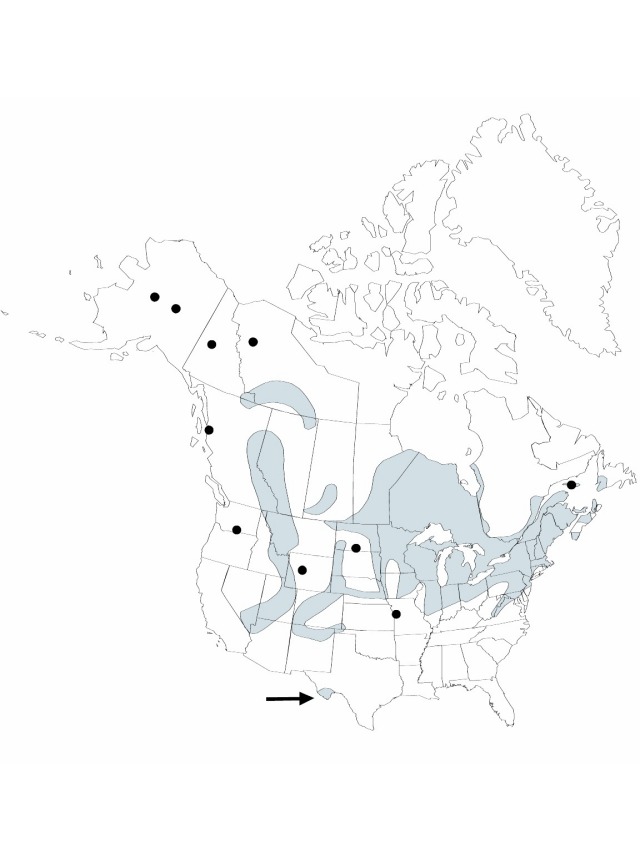Juncus nodosus
Sp. Pl., ed. 2 1: 466. 1762.
Herbs, perennial, rhizomatous, 0.4–5.5(–7) dm. Rhizomes with swollen nodes, 1 mm diam. Culms erect, terete, 1–3 mm diam., smooth. Cataphylls 0 or 1–2., pink to gray, apex acute. Leaves: basal 1, cauline 2–4, green to pink; auricles 0.5–1.7 mm, apex rounded, membranaceous to cartilaginous; blade terete, 6–30 cm × 0.5–1.5 mm. Inflorescences terminal racemes of 3–15 heads, 0.6–6 cm, branches ascending to erect; primary bract erect; heads 6–30-flowered, spheric, 6–10(–12) mm diam. Flowers: tepals green to light brown, lance-subulate, 2.4–4.1 mm, nearly equal, apex acuminate; stamens 3 or 6, anthers 1/2 to equal filament length. Capsules exserted, chestnut brown, 1-locular, lance-subulate, 3.2–5 mm, apex tapering, valves separating at dehiscence, fertile throughout or only proximal to middle. Seeds oblong, ellipsoid, or obovoid, 0.4–0.5 mm, not tailed. 2n = 40.
Phenology: Fruiting early summer–fall.
Habitat: Sandy and muddy shores of lakes, streams, rivers, and estuaries (both freshwater and brackish), swamps, fens, salt marshes, and wet fields, often calcareous
Elevation: 0–2200 m
Distribution

Alta., B.C., Man., N.B., Nfld. and Labr., N.W.T., N.S., Ont., P.E.I., Que., Sask., Yukon, Alaska, Ariz., Calif., Colo., Conn., Del., Idaho, Ill., Ind., Iowa, Kans., Maine, Md., Mass., Mich., Minn., Mo., Mont., Nebr., Nev., N.H., N.J., N.Mex., N.Y., N.Dak., Ohio, Okla., Pa., R.I., S.Dak., Tex., Utah, Vt., Va., Wash., W.Va., Wis., Wyo., Mexico (s to Puebla).
Discussion
The Texas populations and some of the northern Mexican populations consistantly have 3 stamens. These populations have been separated as Juncus nodosus var. meridionalis. Plants with 3 stamens are found elsewhere, however, and other significant characters do not appear to separate these populations.
Selected References
None.